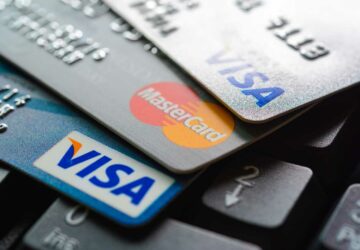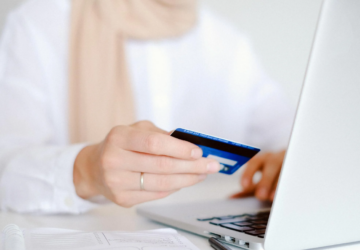In our increasingly digital world, payment cards have become an integral part of our daily lives. Whether it’s credit cards, debit cards, or prepaid cards, they offer us the convenience of making transactions in-store, online, and even internationally. However, with this convenience comes the risk of payment card fraud. Criminals are continually finding new ways to steal card information and misuse it for their gain. To help you safeguard your payment cards from fraud, we’ve compiled a list of top tips that also touch on the importance of wallet care and pocket insurance.
Understanding Payment Card Fraud
Before we dive into the tips for preventing payment card fraud, it’s essential to understand the various types of fraud that can occur:
1. Card Skimming: Criminals use skimming devices to capture card information when you swipe or insert your card at an ATM or point-of-sale terminal.
2. Carding: Cybercriminals use stolen credit card information to make small online purchases to test if the card is valid before using it for more significant transactions.
3. Phishing: Fraudsters send fraudulent emails or messages, posing as legitimate organizations, to trick you into revealing your card information.
4. Lost or Stolen Cards: If your card is lost or stolen, someone else could use it for unauthorized transactions.
5. Identity Theft: Criminals may steal your personal information, including card details, to open new accounts or commit financial fraud in your name.
Now, let’s explore the top tips to protect your payment cards and your finances:
1. Regularly Check Your Statements
One of the simplest yet most effective ways to spot unauthorized transactions is to review your card statements regularly. Ensure that all the transactions listed are legitimate. If you notice any discrepancies or unfamiliar charges, contact your card issuer immediately.
2. Set Up Account Alerts
Most banks and card issuers offer account alerts that can be customized to your preferences. These alerts can notify you of various activities on your card, such as large transactions, international purchases, or low balances. Setting up these alerts can help you detect suspicious activity quickly.
3. Be Cautious Online
When shopping or conducting transactions online, ensure that you are using secure websites. Look for “https://” in the URL, which indicates a secure connection. Avoid making online purchases from websites that appear untrustworthy or lack customer reviews.
4. Use Strong Passwords
For online accounts associated with your payment cards, use strong and unique passwords. Avoid using easily guessable passwords like “123456” or “password.” Consider using a password manager to generate and store complex passwords securely.
5. Enable Two-Factor Authentication (2FA)
Whenever possible, enable two-factor authentication for your online accounts. This adds an extra layer of security by requiring you to provide a one-time code sent to your mobile device or email in addition to your password.
6. Secure Your Physical Cards
Keep your physical payment cards secure. Avoid leaving them in easily accessible places like your car’s glove compartment or an unattended bag. Consider using a cardholder or wallet that has RFID-blocking technology to prevent card skimming.
7. Be Wary of Card Readers
When using ATMs or point-of-sale terminals, inspect the card reader for any unusual attachments or devices. Criminals often use skimming devices that can be discreetly attached to card readers. If something looks suspicious, find another location to make your transaction.
8. Protect Your Card Details
Avoid sharing your card details over the phone or via email unless you are certain you are dealing with a legitimate entity. Be cautious of unsolicited calls or messages requesting your card information.
9. Use Mobile Payment Apps
Consider using mobile payment apps like Apple Pay, Google Pay, or Samsung Pay, which generate unique transaction codes for each purchase. This adds an extra layer of security as your actual card details are not shared with the merchant.
10. Report Lost or Stolen Cards Immediately
If you lose your card or suspect it has been stolen, report it to your card issuer immediately. They can block your card to prevent unauthorized use.
11. Keep Personal Information Secure
Be mindful of how you handle and share personal information. Shred documents containing sensitive data and avoid sharing personal details on social media platforms.
12. Educate Yourself About Phishing Scams
Learn to recognize phishing attempts. Be cautious of emails or messages that ask you to click on suspicious links or provide personal information.
13. Consider Wallet Care and Pocket Insurance
In addition to taking these precautions, you may want to consider wallet care and pocket insurance. These types of insurance can provide coverage in case your wallet is lost or stolen, including the loss of your payment cards.
Wallet Care: Wallet care insurance typically covers the loss of your wallet, including cash, cards, and identification documents. It can also provide coverage for expenses related to card replacement and legal assistance if your cards are misused.
Pocket Insurance: Pocket insurance is similar but covers specific items kept in your pockets, such as payment cards, mobile phones, or keys. It offers financial protection in case these items are lost or stolen.
Conclusion
Safeguarding your payment cards from fraud is an ongoing effort that requires vigilance and caution. By regularly monitoring your statements, using secure online practices, and following the tips outlined above, you can reduce the risk of falling victim to card fraud.
Additionally, considering wallet care and pocket insurance can provide an added layer of protection in case your payment cards are lost or stolen. These insurance options can offer peace of mind, knowing that you have financial coverage in case of an unfortunate incident.








